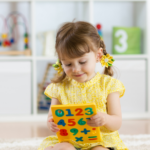
Phonics: The fundamentals of phonics in early years
Find out about the fundamentals of phonics and elements which help children to become successful readers and what nurseries can do to support them.
How do children learn to read?
Learning to read requires mastering five essential elements – phonemic and phonological awareness, vocabulary, comprehension, fluency and phonics.
Phonemic and phonological awareness
Phonemic awareness is the ability to notice, and work with, individual sounds in words – blending them together for reading and separating them out (segmenting) for spelling.
Phonological awareness is the ability to recognise and manipulate the individual sounds and words in spoken language. It is also being able to identify words that rhyme (words that end with the same sound), recognising alliteration (words that start with the same sound), identifying syllables in words and being able to break up a sentence into individual words.
Vocabulary
In order for children to become successful readers, it is vital they are exposed to a wide range of vocabulary. Rich conversations around any new words are valuable so children understand what words mean and can feel comfortable to use them in their own conversations.
Stories, rhymes and songs can all be great ways to expose children to new vocabulary.
Remember – if children can learn and say tricky dinosaur names, they can also learn and use other exciting vocabulary. They love to think they are using a clever word!
Comprehension and fluency
Comprehension is the ability to understand what you have read (or what has been read to you). When reading stories with young children it is essential to check that children understand what is happening or has happened. Comprehension also helps children predict what might happen next in the story because of what they already know.
Fluency is the speed at which children read. In order to comprehend a story, it needs to be read at a reasonable pace. Fluency comes with practise when they have mastered the phonics side of reading.
Phonics
Phonics teaches children the link between letters and the sounds they represent.
Children will learn the single letter sounds first and then the most common groups of letters (digraphs/trigraphs) in order to build up their reading proficiency. Phonics is taught methodically to make sure that children are able to make good progress toward becoming a reader.
What can nurseries do to support phonics?
Talk to children! Children who are exposed to high quality interactions, stories, songs and rhymes from an early age are more likely to become successful, avid readers when they begin their phonics journey (usually in the first year of school).
Focusing on the pre-reading skills of phonological awareness skills such as rhyme, alliteration and syllables will help children begin to recognise and manipulate the sounds they hear in spoken language.
Looking for more support with phonics in early years?
See our ‘Let’s look at phonics‘ online course and our ‘Let’s look at writing‘ online course, both FREE to NDNA members and written by early years experts.
- Communication



